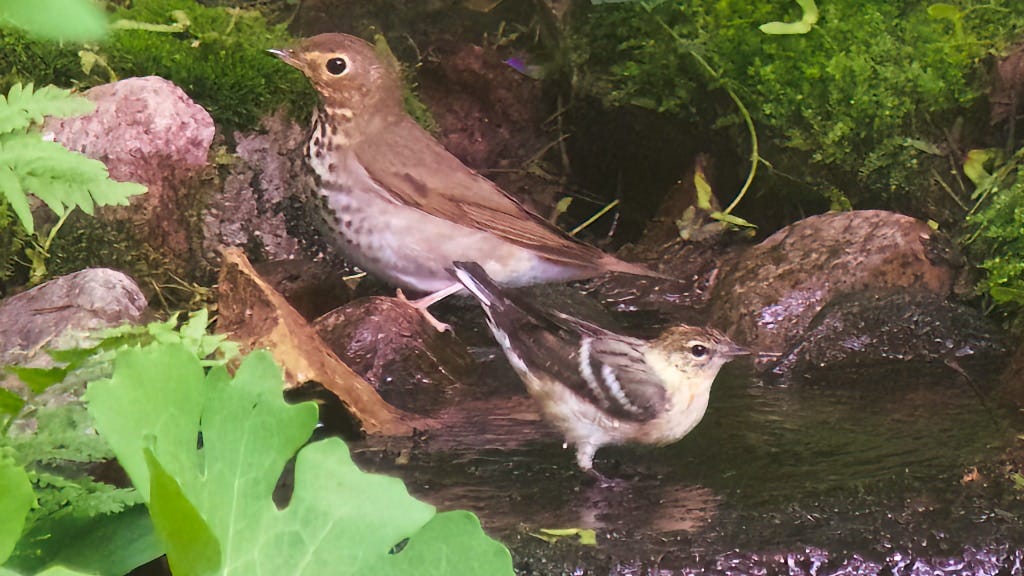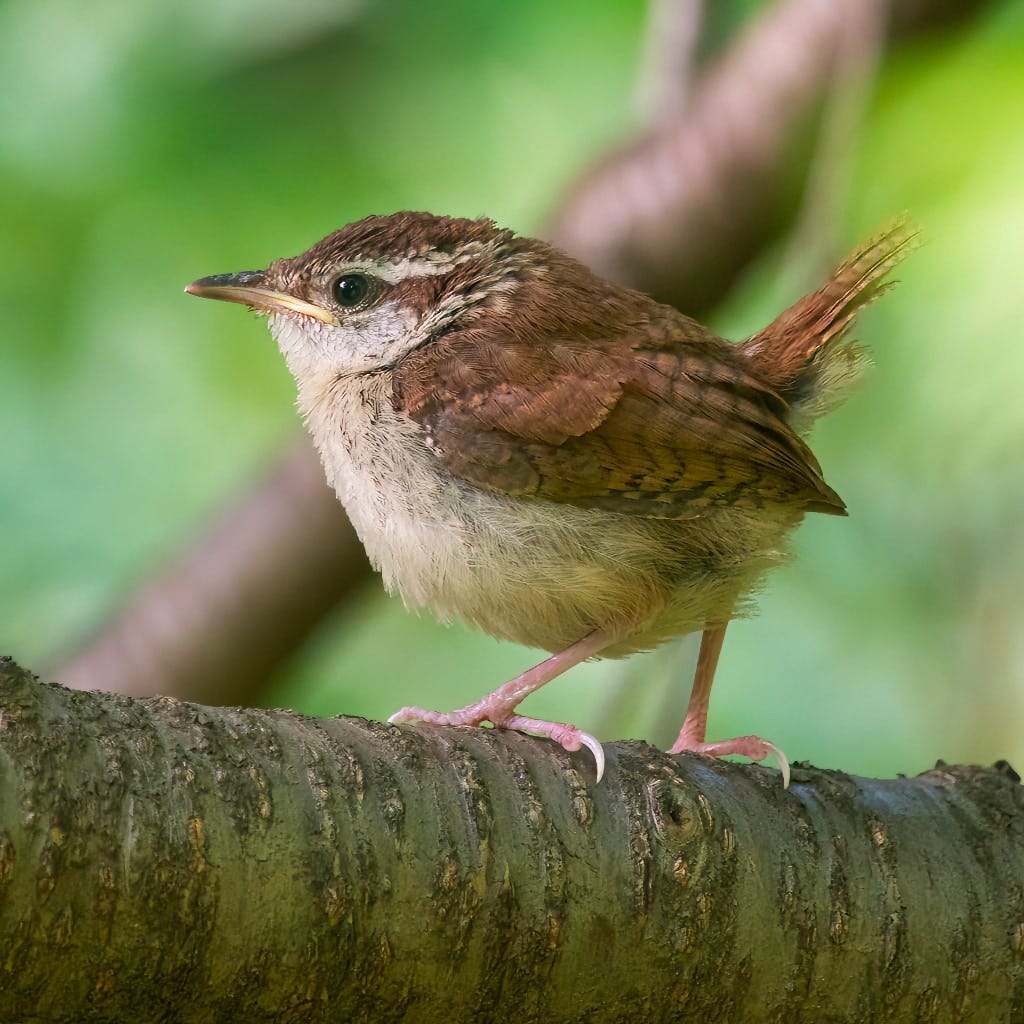It’s the middle of May and around here that is more or less at, or approaching, peak bird migration … so I would be remiss not to devote much of this edition to travelling avifauna. BUT, before getting to the birds let’s have a few words for those of you who garden like we do, alongside nature, inviting the bees, birds and butterflies to join us … a short quotation and a link to the original.
The trained garden designer in me from long ago rarely bubbles to the surface these days, the need to think of function over form or whether we are north facing, soil type and hidden frost pockets disappeared long ago. The billowing borders and beds do their own thing for the best part of the year, shrubs are cut back when they get too unruly. Roses, of which I have many, are fed in spring and summer and deadheaded only when I happen to be walking slowly by. Rush is not a word the garden knows. Neither is perfection. Rather like my animal shadow, Freddie, the few words it does understand include leave, sit and stay. Leave is what I do to many flowers others would call weeds. The huge swathe of nettles that grows over the once productive and tidy vegetable patch would no doubt horrify some. They grow as tall as me by mid summer with thick hairy stems and hand sized leaves that leave itchy white blotches if touched by accident. If you walk up the garden in late summer to where the nettles tower up to meet the plum and apple tree branches, the air will be sparkling with flittering red admiral butterflies, it’s quite a magical sight, one that transports me to another place, not of this world.
There is more at “The Aging Optimist”
Birds in May - Here to Stay or Just Passing Through
Over and above all else, May is the month of Spring Migration. We are blessed in the Montreal region by being located right underneath the Eastern, or Atlantic, Flyway and the result is that literally millions of birds are funnelled over our heads and through our parks and gardens during the month. For some this is as far as they will go, and they will find breeding territory alongside. For others, we are but a brief refuelling stop for birds who go north into the Boreal Forest to build nests and produce the next generation. It’s not like it was just few years ago though - while millions of birds are travelling en masse during their annual spring migration. climate change, habitat loss, and human infrastructure are making that journey really much more difficult for a lot of species than it should be. Visibly, the numbers of birds coming this way are down in numbers year by year.
There are four flyways on the North American continent, more or less dictated by geographic features such as lakes or mountains. The Eastern/Atlantic Flyway starts on the southern Atlantic Coast and curves northwestward across Florida, West Virginia and parts of Ohio, then continues northward into eastern Canada with smaller routes for different species branching off, some heading westwards over the prairies. Birds that have wintered in the Caribbean and in central and Latin America join by different routes and travel northward in a massive wave. Small and colourful warblers reach the Montreal region by this route, also many shorebirds, ducks and large raptors. It is estimated that about 500 different bird species use the Atlantic Flyway, which actually covers a relatively small landmass. In fact, much of the flyway is over or very close to water, including the East Atlantic and the Gulf of Mexico. A lot of these birds, heading north or back south in the fall, have to cross the St-Lawrence River and there is a tendency, varying with species, to find the shortest route across open water. One of those routes takes the birds over Ile Perrot and the land around there to cross onto the island of Montreal, pretty much over our heads here on the West Island. Lucky us.
All we have to do is be ready to see them and, ideally, to persuade some to come down into our gardens for just a short while so that we can enjoy their presence.
During spring migration, the birds that probably everyone really wants to see are the colourful Warblers. You might be surprised to learn that there are 37 Warbler species that have at some time or another been seen in the Montreal area. Some of those are, of course, unusual and some are strays that got lost and ended up here, but we have recorded 24 of those species in Baie-D’Urfé. May is far and away the best month to be looking out for them. Once June comes, you can relax …
The most productive location in town (probably in most towns) to see the migrating birds passing through is your garden. If you live near me then you could/should go to the Arboretum, especially around Blossom Corner in the early morning, but your garden can be very productive. We have a small pond with a waterfall, at the top of which is a tiny header pool from which the water spills - I wrote about this in last week’s edition if you missed it. There are rocks in the header pool and nowhere is the water deeper than a few inches. The result is that tired and thirsty birds that have travelled a very long way will come down for a drink and to splash around and refresh themselves right where we can watch and photograph them. You don’t have to create this sort of set-up, though. The birds are looking for somewhere sheltered, and they are drawn by moving water as if to a magnet. That’s not hard to provide – run a hose to a sheltered spot near a bush and let the water drip - drip - drip into a shallow basin or tray and wait to see who arrives. Some years you will get a lot of birds, some not many at all, but the fun is in waiting, watching and tinkering to improve your “bird magnet” year by year.
What might you see? Yellow-rumped Warblers are quite common, as are Nashville and Tennessee Warblers. Maybe a Yellow Warbler or a Blackpoll Warbler. If the birding gods are smiling, perhaps Bay-breasted, Canada or Black-throated Blue Warblers. To take an example, during just one exceptional week of May in 2019 we recorded some 30 species of birds in the garden, mostly near the waterfall. Of these, 11 were warblers. Quite possibly there might have been more, but we have to break off watching now and again for things like cooking and eating dinner. Early in the week the White-throated Sparrows that hung around for a while were joined by a couple or three White-crowned Sparrows – they are the guys in “cycle helmets” with grey chests – and not long after a female Baltimore Oriole was attracted to a halved orange we put out with her in mind. The warblers started to arrive a couple of days later in some numbers, often around afternoon tea time so we could enjoy them in comfort. You can hang Hummingbird feeders from the beginning of May but they must be cleaned frequently, so we just grow plants which attract them
Nature All Around Us
I was just wrapping up the text for this post yesterday when I chanced upon an article in Saturday’s Globe & Mail newspaper about “Nature All Around Us” which focusses on activities in Montreal, the City Nature Challenge, Bird Friendly Cities and local students. A friend of mine is one of the educators quoted and a natural teacher. Anyway - here’s a link, please read. This is the message I am trying to spread by means of this newsletter …
Blackburnian Warblers
The various small and colourful warblers we see especially this month have been likened to “tiny jewels”. Perhaps the most jewel-like and gorgeous of them all is the Blackburnian Warbler (Setophaga fusca) - another of those species whose name in French is more accurate. Translated, it is the Orange-throated Warbler … and who could argue with that?
Only noticeably visible for a few days each spring as they migrate back north, they are always the bird I look out for. Stunning. They are forest-canopy specialists and only ever seen at eye level during migration, which right now. In winter, they go south to South America in open forests and shade-coffee plantations … so please make sure to only drink coffee from shade plantations. Costs a little more, but so worthwhile. Fortunately, their nesting does include southern Canada and the northern US but that preference for life very high in mature coniferous and mixed coniferous-deciduous forests with all the leaves between them and your binoculars makes them pretty well invisible once they have arrived at their chosen destination. Nests are usually placed considerably higher in trees than those of other warbler species, up to 80 feet high.
Cornell’s website notes:
Males arrive on the nesting ground before females and sing through the day to advertise to potential mates. Conflicts between males are common at this time, with aggressive displays that appear almost comical in their choreography, with pirouetting moves, bill snapping, wing flicking, and many sorts of flamboyant aerial clashes. They also deliver warnings by singing a different song or by singing very quietly. During the nesting season, males keep up their singing in the early morning or early evening using favored song perches to mark territory. They quickly chase intruding male Blackburnians from the territory. Territories range in size from 1 to 3 acres, and both male and female tend to remain within the boundaries of the territory while raising young. So far as is known, Blackburnian Warblers have a brief courtship display: the female flutters her wings, spreads her tail, and crouches, and the male responds with gliding flights and song. Females construct the nest and do most of the incubation; both sexes feed nestlings and fledglings. Parents remain with fledglings for a brief time after they leave the nest; all members of the family may join local mixed flocks led by Black-capped Chickadees.
Look out this week - if they are around, you can hardly miss them.











Beautiful photos of our avian dinosaur companions. Thank you, Richard. I miss the Morgan Arboretum, l'Anse-à-l'Orme and Cap St. Jacques. So much natural beauty so close to the City.
Peak migration is over out here on the western seaboard. Numbers were staggering last three weeks with hundreds of thousands of migrating birds flying overhead at night, every night it seemed. We're still seeing them come north but the numbers have now dropped off. What an amazing phenomenon.